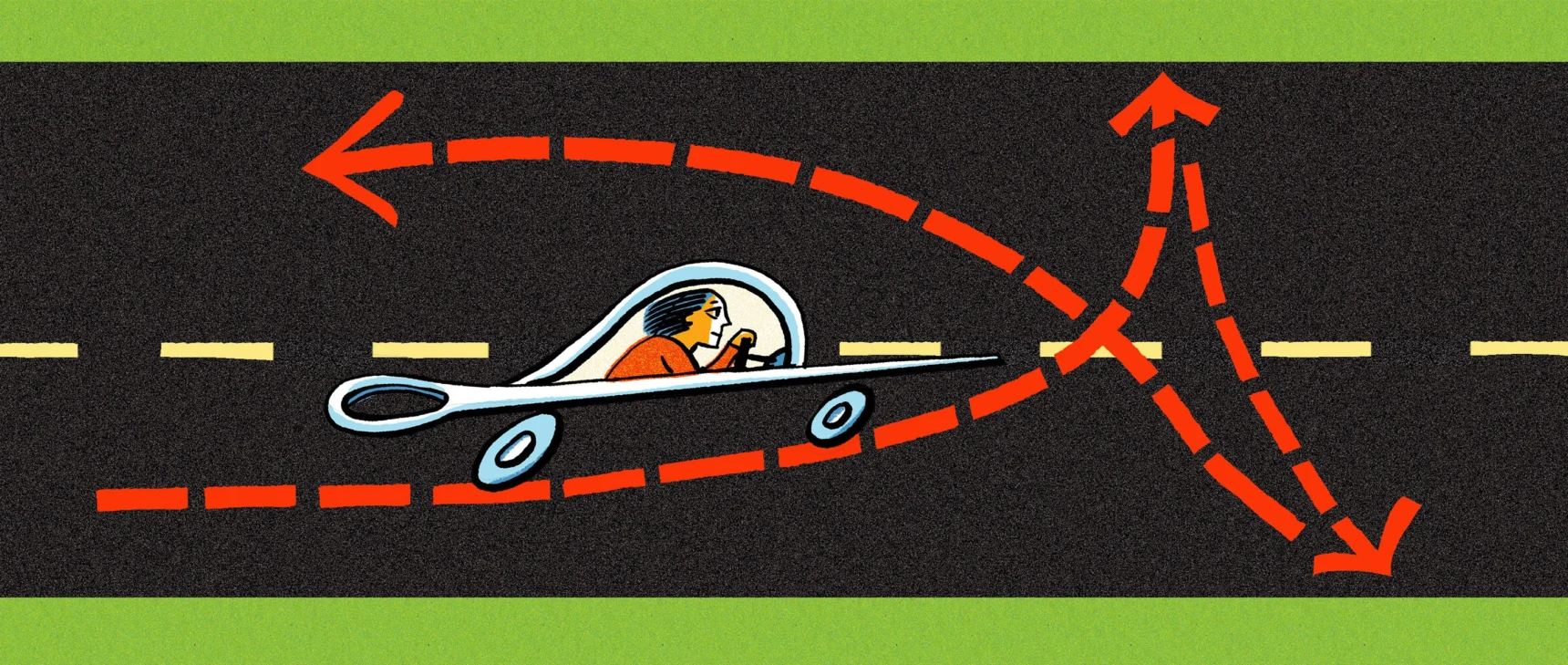Nobel Prize Awarded to mRNA Vaccine Scientists

Quanta Magazine; source: Csilla Cseke/EPA-EFE/Shutterstock (left); PixelPro/Alamy Stock Photo
Introduction
The Nobel Committee has awarded the 2023 Nobel Prize in Physiology or Medicine to Katalin Karikó and Drew Weissman for their pioneering work in the development of mRNA vaccine technology, which made possible a timely vaccine response to the Covid-19 pandemic. Vaccines against the SARS-CoV-2 virus are credited with helping to curb the spread of the pandemic and with saving between 14.4 million and 19.8 million lives in just the first year of their use; mRNA vaccines played a major role in that accomplishment.
For decades, scientists from around the world pursued the use of mRNA (messenger RNA) in medicine. Cells naturally use mRNA, based on genetic DNA, as instructions for making proteins. Researchers aimed to develop tools to create novel mRNA sequences — ones that code for viral proteins, for example — in the lab, and then introduce those mRNA molecules into cells. The cells would then translate these mRNA sequences into viral proteins, thereby alerting the immune system so it would mount a defense against the virus. In effect, the mRNA vaccine turns cells into factories for viral proteins as a strategy for fighting off viral attackers.
However, the first attempts to use mRNA to produce an immune response failed because cells too readily recognized the introduced mRNA molecules as invaders and destroyed them.
In 2005, while working together at the University of Pennsylvania, Karikó and Weissman discovered a way to slightly tweak the nucleotide sequence of the mRNA molecules so that they could sneak past cellular immune surveillance and avoid kicking up a massive inflammatory response. They went on to show in 2008 and 2010 that modified mRNA molecules could produce high levels of proteins. These breakthroughs made mRNA technology usable for creating safe and effective vaccines.
Within 15 years, the methods were proved on the global stage. By early 2021, barely a year after the Covid-19 pandemic first erupted around the world, multiple pharmaceutical companies had used Karikó and Weissman’s mRNA tools to roll out vaccines against the virus. The pandemic served as a proof of concept for the vaccines, and their success helped pull the world out of the pandemic’s deadliest phase.
Karikó and Weissman’s discoveries “fundamentally changed our understanding of how mRNA interacts with our immune system and had a major impact on our society during the recent Covid-19 pandemic,” said Rickard Sandberg, a member of the Nobel Committee, during this morning’s announcement. Vaccines, both of the conventional and mRNA varieties, “have saved millions of lives, prevented severe Covid-19, reduced the overall disease burden and enabled societies to open up again.”
What is mRNA?
Messenger RNA is a single strand of genetic code that the cell uses as instructions to make proteins. These mRNA molecules are native to cells and are key parts of everyday cellular functions: They are the messengers that carry transcribed DNA sequences out of the protected nucleus and into the cell cytoplasm, where they can be translated into proteins by the organelles called ribosomes. A ribosome reads the strand, translating groupings of genetic letters into sequences of amino acids. The long string of amino acids that results then folds into the appropriate protein.
How do mRNA Covid-19 vaccines work?
Scientists have learned to write mRNA code to form novel proteins — including proteins that can help cells recognize viruses they’ve never seen. The mRNA technology developed by the Nobel Prize winners borrows the cells’ protein-making machinery, inducing cells to produce viral proteins that prime the immune system to recognize a given virus if they encounter it later.
When smuggled into cells inside lipid nanoparticle capsules, the mRNA elements deliver the recipe for making the SARS-CoV-2 “spike” protein, which is found on the outside surface of the virus. Cells then use those instructions to produce the spike protein as if they had been infected by the real virus. It’s like an immunity practice round: The mRNA primes the immune system to recognize an actual SARS-CoV-2 spike protein, so that if a person is later exposed to the virus, the immune system will quickly “remember” how to kick up a response to fight it.
Merrill Sherman/Quanta Magazine
What was the breakthrough that led to the success of the vaccines?
In the early 2000s, a major obstacle to the mRNA technology was that it triggered a major inflammatory response in cells. Cells recognized the introduced mRNA as foreign material and tried to get rid of it, putting cellular defense systems into overdrive. After realizing that cells often modify their own native mRNA, Karikó and Weissman decided to see what would happen if they also slightly tweaked the genetic code of the mRNA they were introducing.
In a breakthrough discovery published in 2005, they reported that the inflammatory response had all but disappeared. In the years that followed, they showed that such tweaks could also greatly increase the number of proteins that the cells could make based on the mRNA sequence.
Were mRNA vaccines used to fight illnesses before the pandemic?
A number of companies and researchers tested the promise of mRNA vaccines prior to the pandemic to fight viruses such as Zika and MERS-CoV, which is similar to SARS-CoV-2. But none of the vaccines had been approved for public use as of 2020, when the Covid-19 pandemic erupted. The successful deployment of mRNA vaccines during the pandemic proved the concept of the technology and became a springboard for encouraging its use to prevent or treat other ailments.
What are the benefits of mRNA vaccines over more traditional ones?
The promise of mRNA vaccines is that they can be developed easily and quickly. It typically takes more time — on the timescale of years — for scientists to create and test traditional vaccines, which are often a weakened or denatured version of a real virus. And even after a traditional vaccine is developed, scientists must clear a second hurdle — learning how to grow large volumes of virus or protein in the lab — before they can produce the vaccine on the mass scale required to immunize millions or billions of people.
In 2020, as soon as researchers published the structure and genetic code of the SARS-CoV-2 spike protein, researchers got to work. Within several months, the pharmaceutical giants Pfizer and Moderna had used mRNA technology to develop vaccines that immunized against the virus. They were able to rapidly mass-produce mRNA vaccine, lead clinical trials to prove that the vaccines were safe and effective, and then administer the first jabs to the public by spring 2021. This was possible because mRNA tools can be used to generate a wide variety of proteins without the need to cultivate new methods for growing viruses at a mass scale.
How will mRNA vaccines be used now?
As Sandberg noted in his remarks at the Nobel Prize announcement, “The successful mRNA vaccines against Covid-19 have had a tremendous impact on the interest in mRNA-based technologies.” mRNA technologies are now being used to develop therapeutic protein delivery systems and cancer treatments, as well as vaccines against other infectious diseases.



